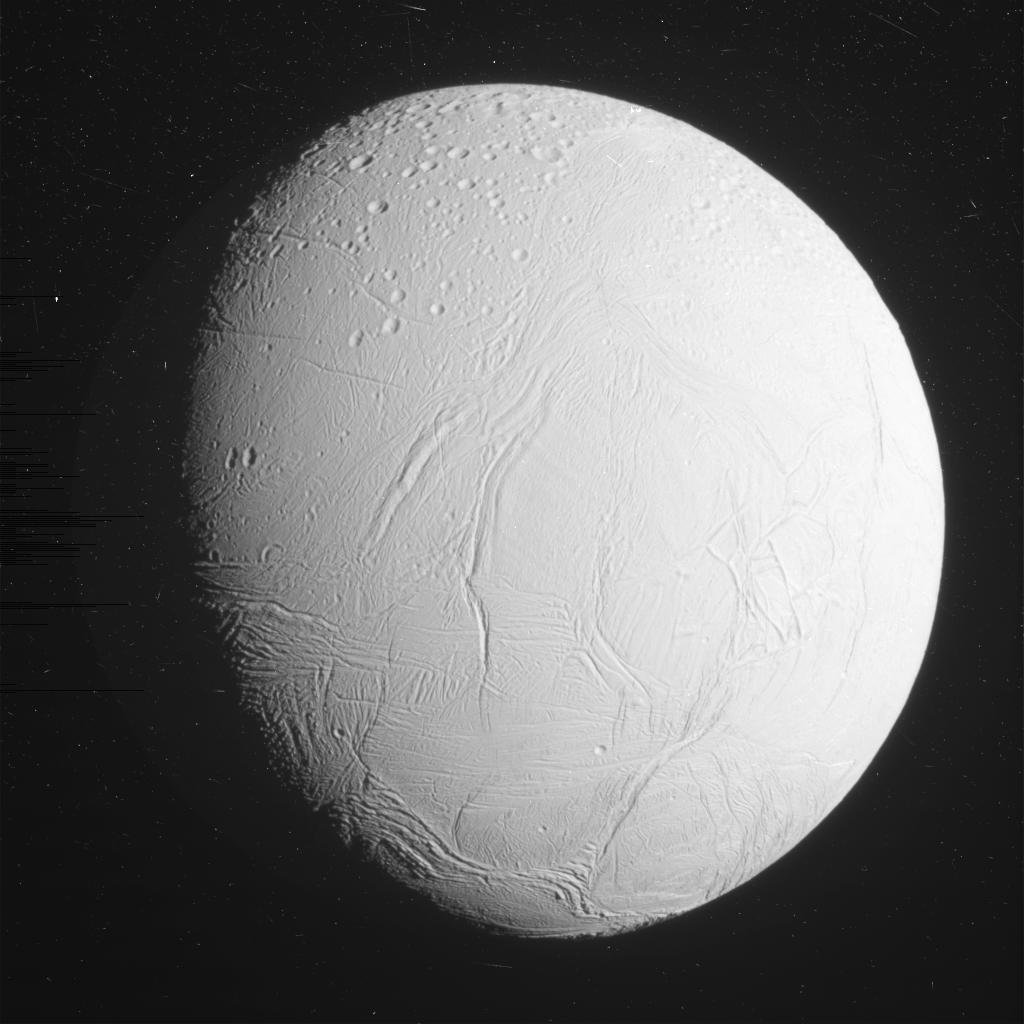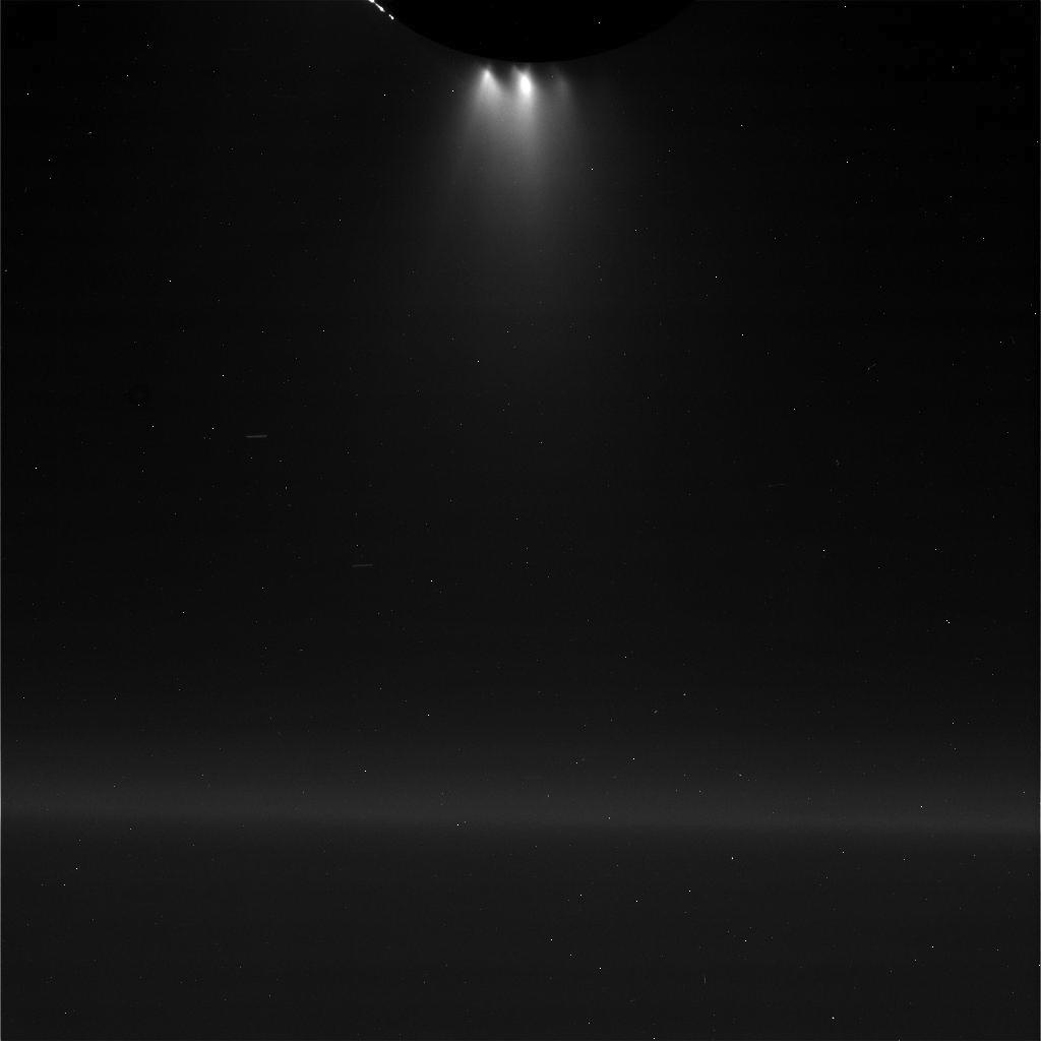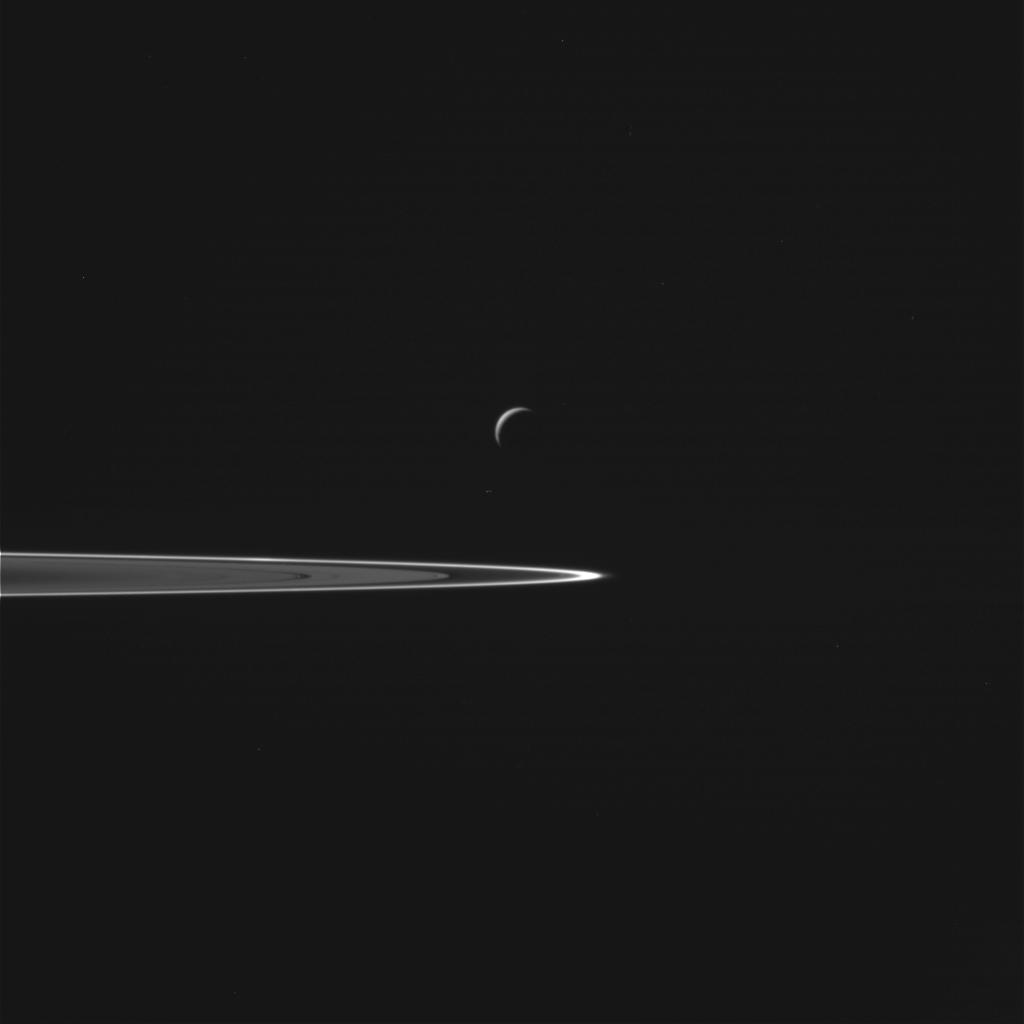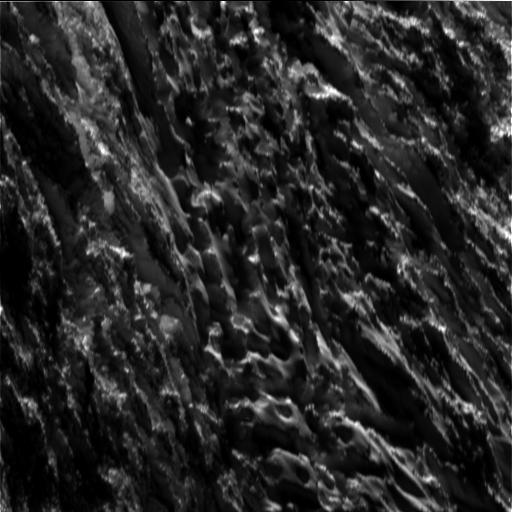Enceladus Flyby: See Cassini's Close-up Photos of Icy Saturn Moon

After a death-defying dive toward the surface of Saturn's icy moon Enceladus, the Cassini spacecraft has sent back images from its close encounter.
Cassini came to within just 30 miles (50 kilometers) of the moon's surface on Wednesday (Oct. 28), and passed through a plume of material that erupts from the icy crust. The new images (which can be seen here, along with past images of Enceladus) show the rough and wrinkled surface of Enceladus, and a backlit view of the erupting spray of material.
Scientists believe the plumes on Enceladus are spitting up material from a liquid water ocean that lies deep under the icy surface. Cassini will now be able to provide some information about the composition of the sprays, and potentially shed light on whether the underground environment is fit to host life. [Latest Saturn Photos From NASA's Cassini Orbiter]
The new images are just the first pieces of information that Cassini gathered during its close approach. The spacecraft will send back more images, as well as the analyses of the plumes, done using Cassini's on board gas analyzer and dust detector. However, those tests could take several weeks to complete, according to NASA.

"Cassini's stunning images are providing us a quick look at Enceladus from this ultra-close flyby, but some of the most exciting science is yet to come," Linda Spilker, a Cassini project scientist at NASA's Jet Propulsion Laboratory, said in the statement from NASA.

The spacecraft is not equipped to search for signs of life, but these analyses could give clues about the environment, and whether it hospitable to life, NASA said. While scientists believe the underground ocean consists largely of water, these analyses could help reveal other chemicals that are present. The analyses could also provide information about any hydrothermal activity on the ocean floor, a heat source that would likely be necessary to support life.
Cassini will make its final flyby of Enceladus on Dec. 19. The spacecraft has been studying Saturn and its moons for a decade, but its mission is scheduled to end in 2017, when it will make a dramatic series of swings between Saturn and tis innermost ring, before intentionally diving into the atmosphere of the gas giant.
Get the Space.com Newsletter
Breaking space news, the latest updates on rocket launches, skywatching events and more!

NASA has said that it is considering sending a dedicated probe to Enceladus to search for signs of life. If it comes to fruition, such a mission could launch as early as 2021. The agency already plans to launch a spacecraft toward Jupiter's moon Europa — another location that could potentially host life — in the early to mid- 2020s.
Follow Calla Cofield @callacofield. Follow us @Spacedotcom, Facebook and Google+. Original article on Space.com.
Join our Space Forums to keep talking space on the latest missions, night sky and more! And if you have a news tip, correction or comment, let us know at: community@space.com.

Calla Cofield joined Space.com's crew in October 2014. She enjoys writing about black holes, exploding stars, ripples in space-time, science in comic books, and all the mysteries of the cosmos. Prior to joining Space.com Calla worked as a freelance writer, with her work appearing in APS News, Symmetry magazine, Scientific American, Nature News, Physics World, and others. From 2010 to 2014 she was a producer for The Physics Central Podcast. Previously, Calla worked at the American Museum of Natural History in New York City (hands down the best office building ever) and SLAC National Accelerator Laboratory in California. Calla studied physics at the University of Massachusetts, Amherst and is originally from Sandy, Utah. In 2018, Calla left Space.com to join NASA's Jet Propulsion Laboratory media team where she oversees astronomy, physics, exoplanets and the Cold Atom Lab mission. She has been underground at three of the largest particle accelerators in the world and would really like to know what the heck dark matter is. Contact Calla via: E-Mail – Twitter









